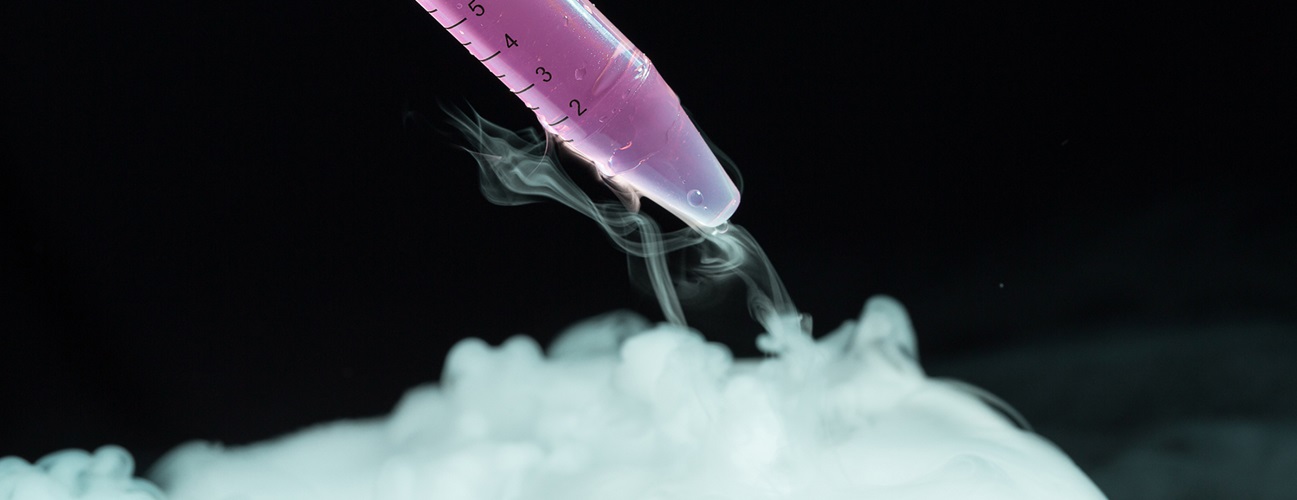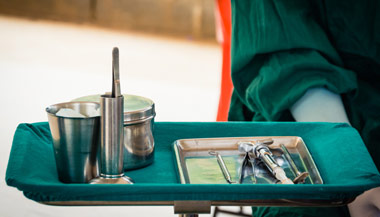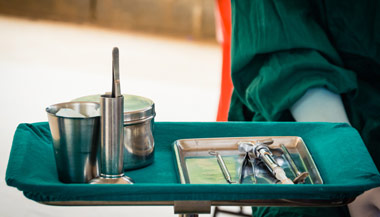Sperm Banking
Featured Expert:
Sperm banking is the process of collecting, freezing and storing sperm. It’s also called sperm freezing or sperm cryopreservation. The sperm can be thawed and used in the future for procedures such as intrauterine insemination (IUI) or in vitro fertilization (IVF).
Why do people freeze sperm?
There are lots of reasons to freeze sperm, explains urologist Amin Herati, M.D., director of Male Infertility and Men’s Health Clinic at Brady Urological Institute.
“The most common reason is if you need treatment for cancer,” says Herati. “After chemotherapy or radiation therapy, there might be very few sperm or no sperm left in the ejaculate (seminal fluid). Or a surgery such as orchiectomy (removal of the testicles) for testicular cancer means sperm can no longer be produced.”
Other reasons for sperm banking include:
- Age: Sperm quality diminishes with age, so you may choose to freeze sperm if you are getting older and want to preserve fertility.
- Medical procedures or conditions: Those who choose to have a vasectomy may want the option of having children in the future. Some medications, such as testosterone therapy or sickle cell therapy, can affect fertility.
- Occupation: People with high-risk jobs, such as those in the military, can freeze sperm to make it available to them or their partners.
- Posthumous sperm retrieval: Family members may choose to collect sperm from someone who is deceased. Sperm can be extracted and frozen up to 72 hours after death.
How is sperm collected in preparation for freezing?
The sperm freezing process involves several steps. First, a person undergoes an infectious disease screening to make sure there are no sexually transmitted diseases. This usually involves a simple blood test.
Next, the person provides a semen sample. Masturbation at a fertility clinic is the most common way to provide the sample, but in some cases, a sample can be produced at home and delivered to a lab within 24 hours.
“The specimen must go into a cup that’s approved by the lab and remain as close as possible to body temperature. The sample also can’t contain any lubricants or moisturizers, unless they’re approved by the lab,” says Herati.
Sometimes a surgical procedure is necessary to extract sperm from testicular tissue. This might be the case for those who have already had a vasectomy or undergone cancer treatment. Individuals with infertility (a very low sperm count or no sperm in the semen) might also need surgery to extract sperm.
How is sperm analyzed?
Once the semen is in the lab, andrologists (specialists in sperm and male fertility) analyze and prepare it for storage. They separate the sperm from the seminal fluid or testicular tissue and look at a small portion of the sample under a microscope.
“We make sure there’s sperm in the ejaculate. If sperm is absent or low, the patient undergoes more testing,” explains Herati. “We do a routine semen analysis. The results of the analysis guide additional testing for infertility.”
Andrologists evaluate the sperm’s concentration, morphology (shape) and motility (movement). They make sure the sperm is healthy and that there’s enough to freeze.
How is sperm frozen and thawed?
Andrologists place prepared sperm into a special freezing solution in small vials. The vials go into storage freezers that contain liquid nitrogen. “Sperm has to stay frozen at a constant temperature of minus 196 degrees centigrade,” says Herati.
Each patient’s sperm is typically split into several vials and kept in multiple storage tanks. If one freezer fails, the remaining sperm samples remain safe. Sperm can be frozen indefinitely.
When someone is ready to use the sperm, it’s carefully thawed in the lab until it reaches room temperature. “After thawing, it’s analyzed to make sure there are motile, active sperm remaining,” says Herati. “Unfortunately, in some cases, one-half to two-thirds of sperm may not survive the freeze-thaw cycle. But the ones that do survive may be at an advantage from a fertility standpoint. Studies suggest that these sperm may be more likely to result in a pregnancy when they’re used in IVF.”
How much does it cost to freeze sperm?
The cost of sperm freezing varies. There’s often one cost for sperm collection and analysis, then ongoing storage costs for freezing. Storage costs can range from $100–$500 per year, but it’s important to check with your insurance provider and physician to understand the costs.
Can I freeze my sperm at home?
It’s not possible to successfully freeze sperm at home. Sperm freezing needs to happen in a laboratory with the proper quality controls in place. The temperature of an average home freezer is about minus 18 degrees centigrade. Sperm needs to be stored at minus 196 degrees centigrade.
It can be possible to collect sperm at home in preparation for freezing. There are services that send you a sperm collection and storage kit. You collect the sample at home, then overnight the kit to the lab for storage.
I've received a cancer diagnosis. What should I do?
Talk to your oncologist and a fertility expert. Any type of cancer or treatment has the potential to affect your sperm production or quality. Don’t feel embarrassed or hesitant to start this important conversation with your providers.
“After receiving a cancer diagnosis, people are so worried about the treatment that they don’t think about what could happen after treatment,” explains Herati. “Studies show that about 90% of men who have undergone cancer treatment would like to have frozen their sperm beforehand.”
I'm young and healthy. Do I really need to freeze my sperm?
“My opinion is that any person between the ages of 18 and 25 should freeze their sperm,” recommends Herati. “You never know what kind of environmental exposures you’ll come across or what health conditions could occur. Sperm tend to be healthiest at this stage of life.”







